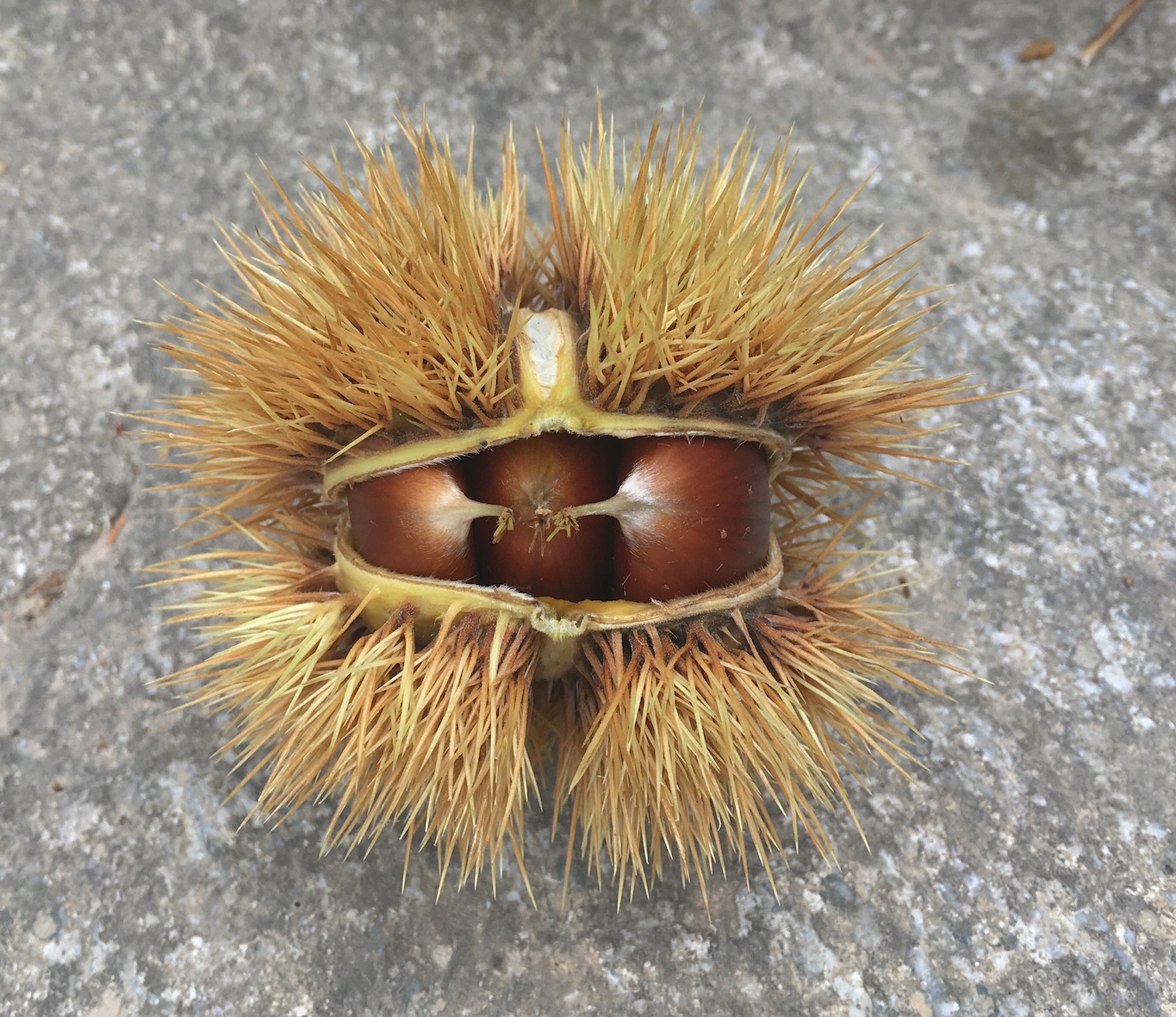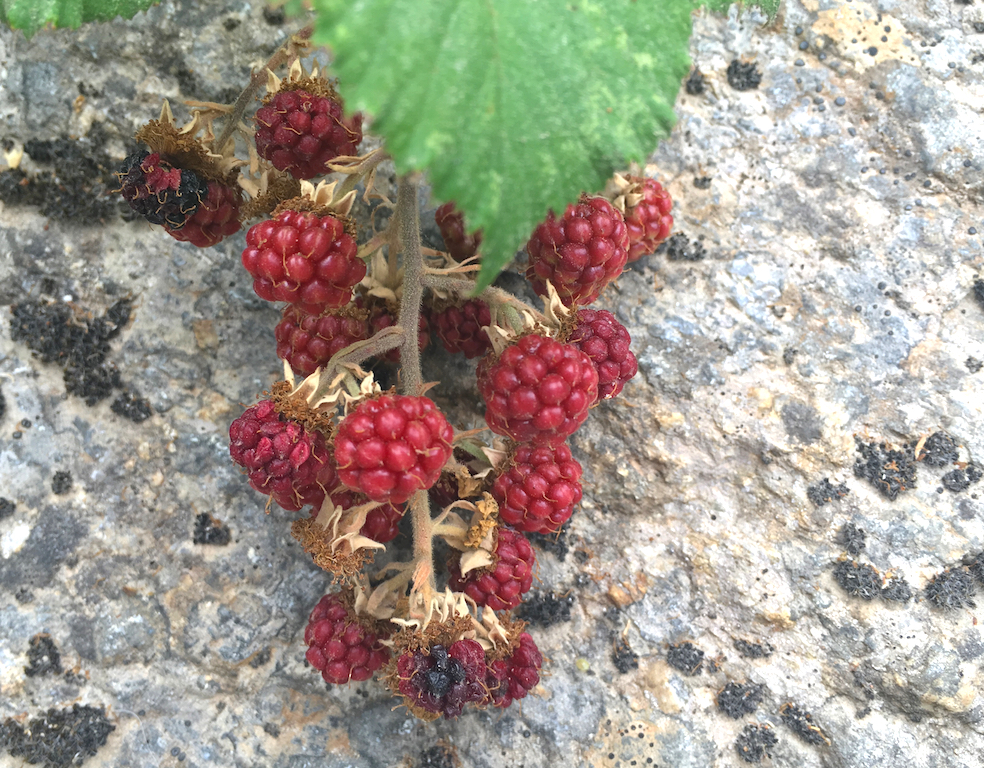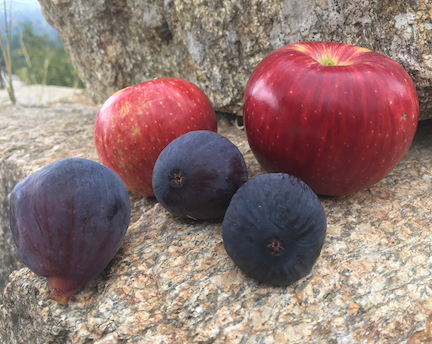One of our favorite little fishing ports is in Karkinargri. This video — tranquility slow motion — doesn’t need any words.
September on Ikaria
I came to walk the monopatia (footpath) in the village of Kastanies that leads to a watermill. It is September and the island is bursting with chestnuts. Chestnuts hang like spiked balled earrings under the Chestnut trees' wide leaves. Many fall and split open, over the pine-needled path around the watermill. I used to collect the chestnuts around here, walk home along the mountain road and roast them over a crackling fire in winter. The village name - Kastanies - means chestnut.
Start of the footpath to the Watermill
Reaching the watermill, I take my time to look around. Usually the seasonal river deposits puddles in between big rocks to the west of the mill, making rooms for rare species of fresh water crabs and other little creatures. But this September, due to low winter rains, the whole rocky area is dry.
I watch a lizard, amazed at how closely its camouflaging skin resembles the surrounding rocks. He belongs here. He senses me inching closer and retreats into a crevice.
I continue onward, past Agia Triada church and along the rising footpath. The view opens up to the deep valley and northern sea coast. It is one of my favorite views on the island and always causes me to stop, catch my breath, and think about where I am. Ikaria's folding terrain, narrow terraces, stone walls, green forests and swooping shadows color the wide expanse.
Footpath area towards some small farms
The footpath then continues past some small farms, and connects to the village road. This time of the year, the village road turns into a garden of Eden. Apples, grapes, figs, pomegranates, olives, peaches, pumpkins and raspberries tempt me along the way. I give in and indulge in the red flesh of figs, dig into the juicy insides of grapes and bite into the skin of a red apple.
And I think about how it is very quiet on Ikaria now. The large summer tourist crowds are gone. The cars tinkering by are mostly local ones, slow, full of mountain dust and very old.
Life as usual has returned to Ikaria.
Some may think this is not enough -- too few people, too few shops, and too few noises. Yet, this is what the real Ikaria is about. It is Ikaria's raw energy drawn from the sun, the water, and the earth. Hard working nature is sharing with us her tastes of longevity.
Life on a small mountain farm
On the way home, I stop in Raches village. It is Sunday today. The center is also quiet, with a few scattered tables occupied. But there is an atmosphere of openness: everyone has a place to sit down, to relax, to sip a coffee.
A kitten walks out of a shop, purrs around my leg and asks me for some attention. I scoop her up for a picture; she is very camera shy.
Ikaria's Archaeological Museum and Collection
Ikaria's ancient history is wonderfully showcased in the new Archaeological Museum in Agios Kyrikos and the Archaeological Collection in Kampos. Visit at least one, and try to get to both, to better understand Ikaria's veneration of Dionysus and the grape vine, its early trade routes that extended to Asian Minor and beyond, and rituals, settlements and styles that cultivated Ikaria's special flair.
Crazy North Wind at Evdilos, Ikaria
Re-Reading Homer on Ikaria
When visiting Ikaria, bring your old copies of Homer’s Odyssey and Iliad and re-read the passages below. Homer used natural elements of the islands and seas as metaphors to drive forward plot points and portray the minds of men. Ikaria shows up in mythical scenes filled with follies, desires and cunning delights.




















